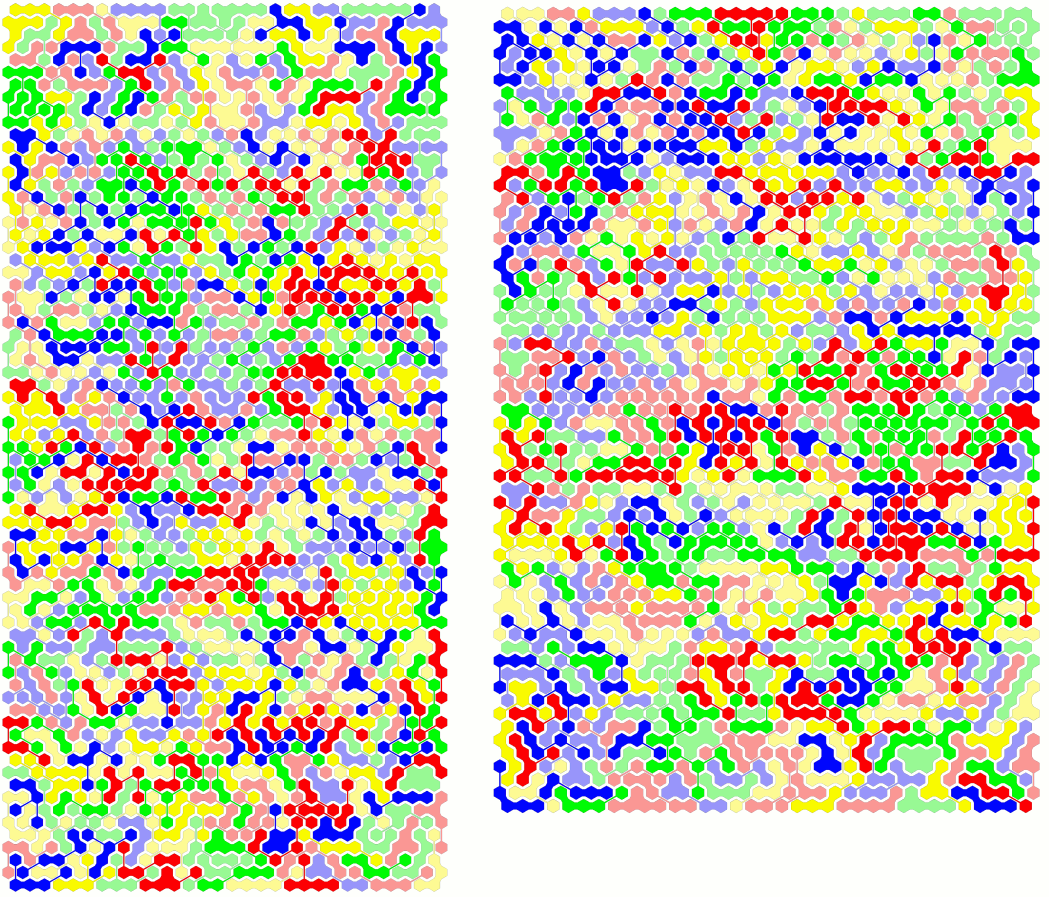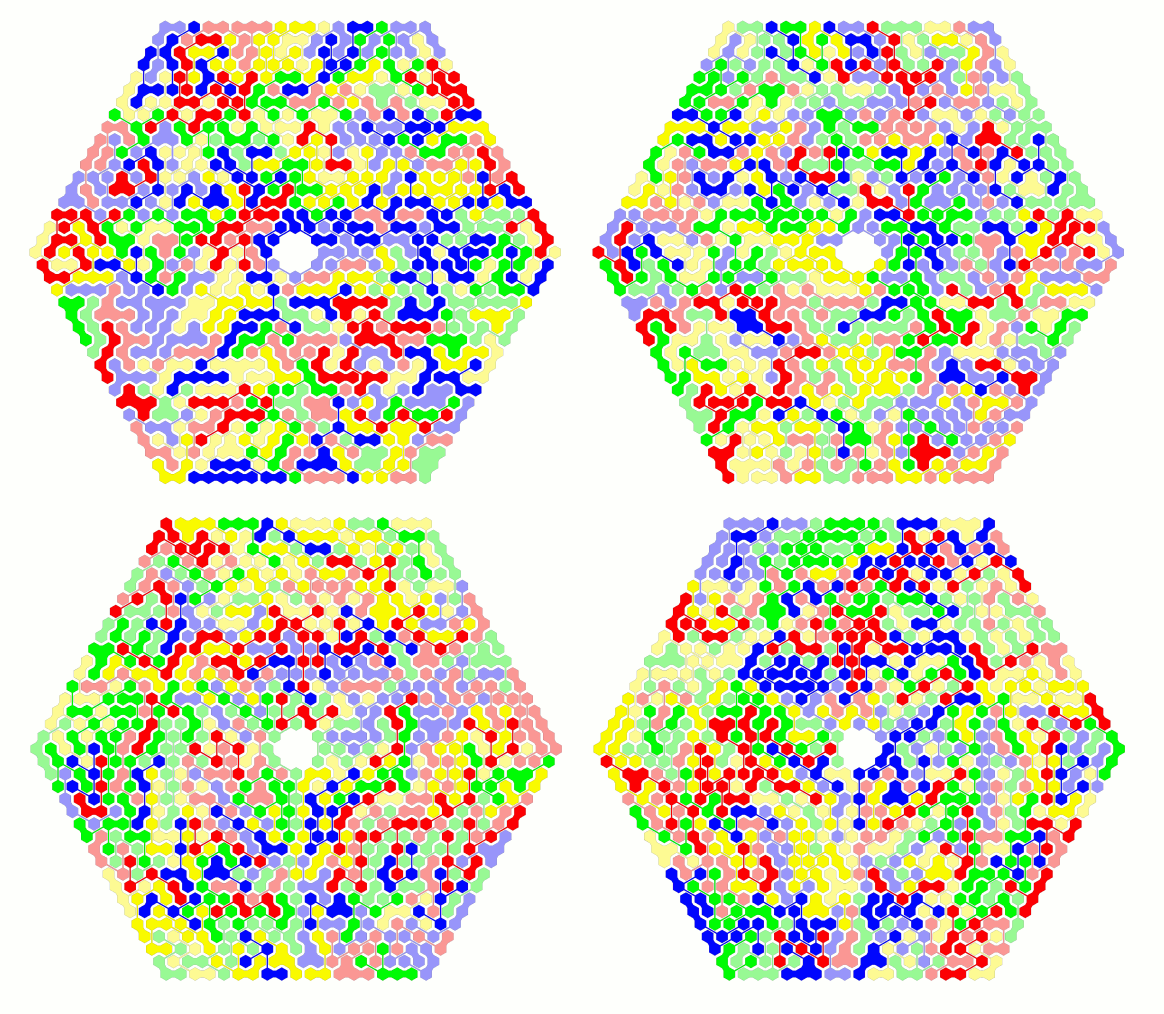Two-sided Rounded Pentahexes
There are 433 pieces in the set of rounded pentahexes and the total area is 2165.
Since 2165 mod 3 = 2 and 2165 mod 6 = 5 it's impossible to cover figures with
hexagonal or triangle symmtry, if all pieces are used. But for the equations L*N+(L-1)(N-1)=2165 and
L*N+(L+1)(N-1)=2165 there are some integer solutions; so we can get kind of rectangles with N rows of
L hexagons connected by N-1 rows of L-1 or L+1 hexagons. In general it's easier to solve the cases with
smaller L because the first and the last hexagons in the rows produce a jagged border, which is easier to match.
For the constructions I divided the whole area into narrow strips of about 8 rows with jagged borders.
Then the solution process was controled by a lower bound for the number of used bridges or pseudo connections.
For example this number should be above 2.5*number of used pieces during the first part of a construction and was
lowered for the further ones. This was done because the pieces with no or few bridges are easy to tile and
you shouldn't use them too early.
Here are two rectangles shown as gif-pictures.

SVG-files to see all rectangles are also provided. They can be used to see, to print or to produce all pieces:
rectangle 31x35+30x36
rectangle 36x30+35x31
rectangle 19x59+18x58
rectangle 59x19+58x18
rectangle 167x7+166x6
rectangle 7x167+6x166
One-sided Rounded Pentahexes
With the 816 pieces I constructed two rectangles
(rectangle 21x100+20x99, rectangle 100x21+99x20 )
and a set of three hexagons with a center hole.
First I used the two-sided set, locked all symmetric pieces and all pieces with no bridges.
I cut two mirror parts out of the whole figure and solved one. Then I had solutions for
both parts taking the one-sided set. The remaining pieces together with the symmetric ones and
the pieces with no bridge had to fill the remaining area.
At last a multiple construction of four hexagons with a small hexagon hole was found.

An SVG-file for these rings is also provided.
Back
Home


